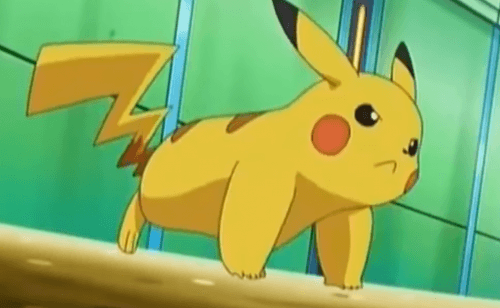The Pokémon Phenomenon Continues

More than 20 years have passed since children around the world discovered the marvels of Pokémon, throwing Pokeballs and fighting nonstop to grow as trainers. The Pokémon phenomenon created a revolution that is still growing, with important achievements on its back.
This is none other than the second most successful video game franchise in history, standing only behind the Mario Bros. We’re talking about the irreplaceable Pokémon phenomenon. Despite the passing of time and the appearance of giant rivals, Pokémon is just as alive today as ever.
Its sales measure by millions of dollars; the number of video games that the franchise has created is remarkable. Its fan base is one of the most spectacular in the industry, and has been and will be passed on from one generation to the next. In short, the success of Pokémon is undeniable.
We can’t talk about the Pokémon phenomenon without mentioning its creator, Satoshi Tajiri. Tajiri makes very few public appearances, such as interviews with the press, and he doesn’t allow himself to be photographed.
The origins of the Pokémon phenomenon
Known as Dr. Bug in school, Tajiri loved to explore his city’s rural countryside to capture insects, dreaming of becoming an entomologist. He was somewhat of an outcast in his class and had a hard time being social.
Eventually, he was diagnosed with Asperger Syndrome, a type of autism. However, what most failed to see at the time is that Tajiri possessed a brilliant mind.
As time passed by, children stopped spending their time playing on the streets and started heading to arcades. This shift lead Tajiri to a great idea: Taking his childhood pastime to the world of video games. And this is how Pokémon came to be, along with Ken Sugimori, who designed the images of the creatures we know today.
The beginning of Pokémon didn’t take place on the big screen. Its illustrations appeared for the first time in Game Freak. Game Freak was a magazine created by Tajiri and Sugimori that published video game tricks. The magazine came to sell more than 10 thousand copies of each edition, which allowed the duo to hire personnel to keep their project in constant evolution.
Game Freak continued to grow and became a company that started to look at other new paths in the creation of video games. After Quinty – its first success in 1989 – they initiated a new project: Pocket Monsters. The game combined Tairi’s ideas with Sugimori’s designs, as well as the suggestions of Shigeru Miyamoto, the creator of Mario Bros.

The beginning of its success
In the Japanese market, this project managed to sell a million copies in its first year. The name Pocket Monsters was abbreviated to what we know today – Pokémon – a game that became a complete success in the United States as well.
Things didn’t stop there. Tajiri had a great idea: To create a secret character within the game that players could only obtain through Pokémon distribution events. He called it Mew, a cat-like creature added to this first edition at the last minute which gave it even more popularity.
Word quickly spread about this new character hidden among the shadows. This, in turn, gave way to myths and rumors regarding the video game, keeping the interest and intrigue of its players alive.
The magazine CoroCoro Comics announced a competition in which the winners would be the first to obtain a Mew in their consoles. And thus the Pokémon phenomenon began.
Extensive game catalog
Pokémon is an undeniable global success. One of the reasons for which it obtained and maintains its place of honor is for its varied video game catalog.
Each game possesses a spectacular story line, which develops when one decides to leave his or her hometown to become a master trainer. The goal is to become league champion by capturing all the creatures.
Each new version is referred to as a generation. Each new generation brings with it new species, moves, stories, abilities and vast improvements in regards to graphics. These are the main characteristics of each generation:
First generation
- 151 species.
- Game Boy Console: These video games were the roots of it all – introducing the RPG (role playing game) progression and battling by turn.
Second generation
- 251 species.
- Game Boy Color Console.
- Included the innovation of the transition from day to night and a system for raising Pokémons.
“Pokémon is none other than the second most successful video game franchise in history, standing only behind the Mario Bros.”
Third generation
- 386 species.
- Game Boy Advance Console.
- Powerful visual evolution.
- Pokémon competitions appear, as well as battles of two against two.
Fourth generation
- 493 species.
- Nintendo DS Console.
- The biggest innovation: The Pokémon world appears in 3D.
- This new generation includes tactile functions and maximizes the online game.
Fifth generation
- 649 species.
- Nintendo DS Console.
- More Pokémon arrive on the scene, as well as factors like seasons, weather and local time.
Sixth generation
- 721 species.
- Nintendo 3DS.
- The 6th generation includes Mega evolutions and a new Fairy type.
- Includes Horde Encounters and Sky Battles.

The evolution goes beyond video games
Video games are what have made the Pokémon phenomenon possible. But, without a doubt, the phenomenon is much bigger than that. It also involves Anime adventures, which include more than 900 episodes, as well as a large number of Pokémon movies.
It’s clear that Pokémon isn’t just a video game. Over the years, it has appeared on movie theater screens, clothing, backpacks, comics, playing cards and all sorts of merchandise. And of course, it has created a common sensation: Combat and overcome.
This is a phenomenon that has cultivated a large number of collectors. These faithful fans cherish each item in their collection as a reminder of their childhood. And children too are among the fanatics, as Pokémon continues to capture the attention of new generations.
More than 20 years have passed since children around the world discovered the marvels of Pokémon, throwing Pokeballs and fighting nonstop to grow as trainers. The Pokémon phenomenon created a revolution that is still growing, with important achievements on its back.
This is none other than the second most successful video game franchise in history, standing only behind the Mario Bros. We’re talking about the irreplaceable Pokémon phenomenon. Despite the passing of time and the appearance of giant rivals, Pokémon is just as alive today as ever.
Its sales measure by millions of dollars; the number of video games that the franchise has created is remarkable. Its fan base is one of the most spectacular in the industry, and has been and will be passed on from one generation to the next. In short, the success of Pokémon is undeniable.
We can’t talk about the Pokémon phenomenon without mentioning its creator, Satoshi Tajiri. Tajiri makes very few public appearances, such as interviews with the press, and he doesn’t allow himself to be photographed.
The origins of the Pokémon phenomenon
Known as Dr. Bug in school, Tajiri loved to explore his city’s rural countryside to capture insects, dreaming of becoming an entomologist. He was somewhat of an outcast in his class and had a hard time being social.
Eventually, he was diagnosed with Asperger Syndrome, a type of autism. However, what most failed to see at the time is that Tajiri possessed a brilliant mind.
As time passed by, children stopped spending their time playing on the streets and started heading to arcades. This shift lead Tajiri to a great idea: Taking his childhood pastime to the world of video games. And this is how Pokémon came to be, along with Ken Sugimori, who designed the images of the creatures we know today.
The beginning of Pokémon didn’t take place on the big screen. Its illustrations appeared for the first time in Game Freak. Game Freak was a magazine created by Tajiri and Sugimori that published video game tricks. The magazine came to sell more than 10 thousand copies of each edition, which allowed the duo to hire personnel to keep their project in constant evolution.
Game Freak continued to grow and became a company that started to look at other new paths in the creation of video games. After Quinty – its first success in 1989 – they initiated a new project: Pocket Monsters. The game combined Tairi’s ideas with Sugimori’s designs, as well as the suggestions of Shigeru Miyamoto, the creator of Mario Bros.

The beginning of its success
In the Japanese market, this project managed to sell a million copies in its first year. The name Pocket Monsters was abbreviated to what we know today – Pokémon – a game that became a complete success in the United States as well.
Things didn’t stop there. Tajiri had a great idea: To create a secret character within the game that players could only obtain through Pokémon distribution events. He called it Mew, a cat-like creature added to this first edition at the last minute which gave it even more popularity.
Word quickly spread about this new character hidden among the shadows. This, in turn, gave way to myths and rumors regarding the video game, keeping the interest and intrigue of its players alive.
The magazine CoroCoro Comics announced a competition in which the winners would be the first to obtain a Mew in their consoles. And thus the Pokémon phenomenon began.
Extensive game catalog
Pokémon is an undeniable global success. One of the reasons for which it obtained and maintains its place of honor is for its varied video game catalog.
Each game possesses a spectacular story line, which develops when one decides to leave his or her hometown to become a master trainer. The goal is to become league champion by capturing all the creatures.
Each new version is referred to as a generation. Each new generation brings with it new species, moves, stories, abilities and vast improvements in regards to graphics. These are the main characteristics of each generation:
First generation
- 151 species.
- Game Boy Console: These video games were the roots of it all – introducing the RPG (role playing game) progression and battling by turn.
Second generation
- 251 species.
- Game Boy Color Console.
- Included the innovation of the transition from day to night and a system for raising Pokémons.
“Pokémon is none other than the second most successful video game franchise in history, standing only behind the Mario Bros.”
Third generation
- 386 species.
- Game Boy Advance Console.
- Powerful visual evolution.
- Pokémon competitions appear, as well as battles of two against two.
Fourth generation
- 493 species.
- Nintendo DS Console.
- The biggest innovation: The Pokémon world appears in 3D.
- This new generation includes tactile functions and maximizes the online game.
Fifth generation
- 649 species.
- Nintendo DS Console.
- More Pokémon arrive on the scene, as well as factors like seasons, weather and local time.
Sixth generation
- 721 species.
- Nintendo 3DS.
- The 6th generation includes Mega evolutions and a new Fairy type.
- Includes Horde Encounters and Sky Battles.

The evolution goes beyond video games
Video games are what have made the Pokémon phenomenon possible. But, without a doubt, the phenomenon is much bigger than that. It also involves Anime adventures, which include more than 900 episodes, as well as a large number of Pokémon movies.
It’s clear that Pokémon isn’t just a video game. Over the years, it has appeared on movie theater screens, clothing, backpacks, comics, playing cards and all sorts of merchandise. And of course, it has created a common sensation: Combat and overcome.
This is a phenomenon that has cultivated a large number of collectors. These faithful fans cherish each item in their collection as a reminder of their childhood. And children too are among the fanatics, as Pokémon continues to capture the attention of new generations.
This text is provided for informational purposes only and does not replace consultation with a professional. If in doubt, consult your specialist.








